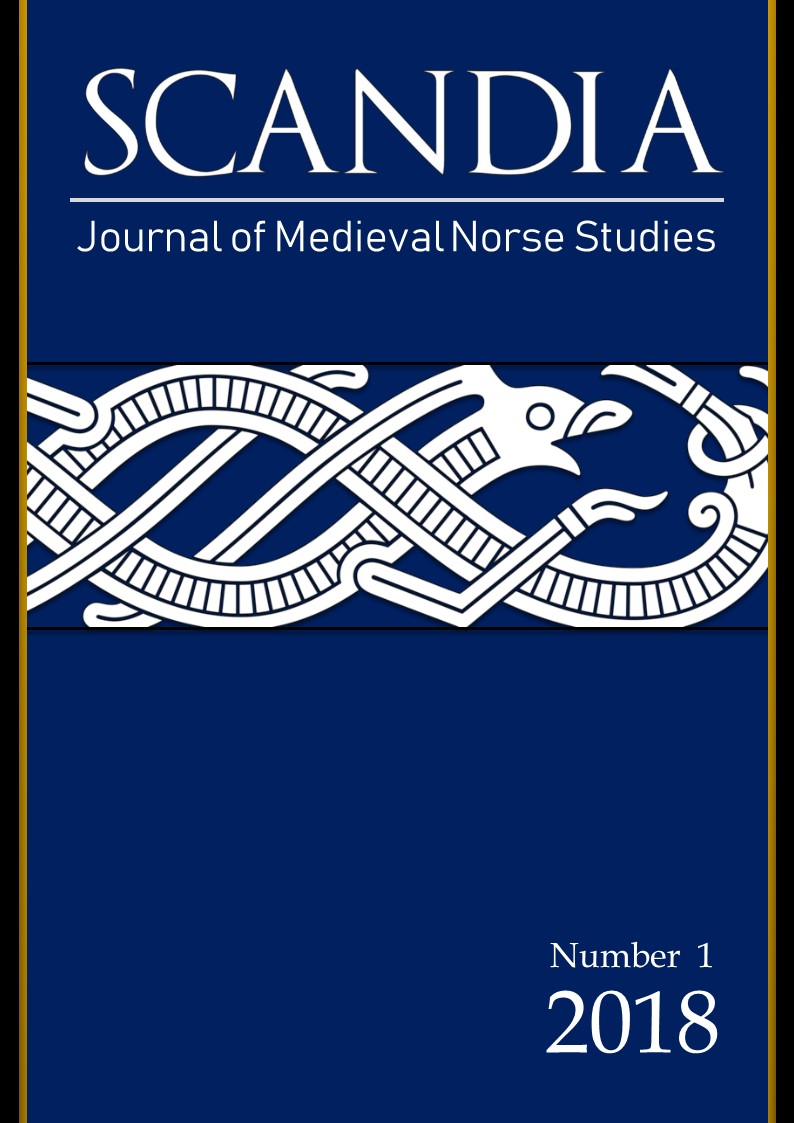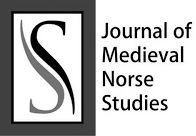Between Fiction and Falsehood: The Ethics of Lying in the Sagas of Icelanders
Abstract
This paper discusses a series of episodes from the Sagas of Icelanders in which one character attempts to deceive another. In each case the presentation of the incident is explored to establish whether the deception can be justified according to the internal ethics of the semi-fictionalised Saga Age depicted. On the basis of these examples, drawn from a range of sagas but with a particular emphasis on Grettis saga and Njáls saga, it goes on to argue that the saga authors consistently distinguish between the ethical justification for different attempts to deceive based on: the circumstances in which they take place, the degree to which they might be described as audacious, and the level of success which their instigators enjoy. It posits a distinction between “active” deception (incorporating slander, oath-breaking and níð) and “passive” deception (entrapping an interlocutor into deceiving himself), and concludes with a comparison of the saga hero's skill in bending the truth and the saga author's attempt to be truthful to his source material whileResumé: Cet article traite d'une série d'épisodes des Sagas d'Islandais dans laquelle un personnage tente de tromper un autre. Dans chaque cas, la présentation de l'incident est explorée pour établir si la tromperie peut être justifiée en fonction de l'éthique interne de l'Age Saga semi-fictionnalisé représenté. Sur la base de ces exemples, tirés d'une série de sagas mais avec un accent particulier sur Grettis saga et Njáls saga, il continue à soutenir que les auteurs de saga distinguent systématiquement la justification éthique des différentes tentatives de tromper sur la base de: dans lequel ils ont lieu, le degré auquel ils peuvent être appellés audacieux, et le niveau de succès dont jouissent leurs instigateurs. Il pose une distinction entre la tromperie “active” (qui incorpore la calomnie, la rupture de serment et le níð) et la tromperie “passive” (piéger un interlocuteur pour faire une erreur) et conclut par une comparaison de l'habileté du héros de la saga à plier la vérité avec l'habileté de l'auteur d'être fidèle à son matériel source tout en soutenant l'intérêt de son lecteur.
Downloads
References
Bibliographical references:
Primary sources:
HALLDÓRSSON, Jóhannes (Ed.). Gunnars saga Keldugnúpsfífls. Reykjavík: Hið Íslenzka Fornritafélag 14, 1959.
HALLDÓRSSON, Ólafur (Ed.). Óláfs saga Tryggvasonar en mesta. Copenhagen: Munksgaard, 1958-2000.
JÓNSSON, Guðni (Ed.). Grettis saga Ásmundarsonar. Reykjavík: Hið Íslenzka Fornritafélag 7, 1936.
KRISTJÁNSSON, Jónas (Ed.). Þorleifs þáttr jarlsskálds. Reykjavík: Hið Íslenzka Fornritafélag 9, 1956.
NORDAL, Sigurður and JÓNSSON, Guðni (Eds.). Heiðarvíga saga. Reykjavík: Hið Íslenzka Fornritfélag 3, 1938.
NORDAL, Sigurður and JÓNSSON, Guðni (Eds.). Gunnlaugs saga Ormstungu. Reykjavík: Hið Íslenzka Fornritafélag 3, 1938.
SVEINSSON, Einar Ólafur (Ed.). Laxdæla saga. Reykjavík: Hið Íslenzka Fornritafélag 5, 1934.
SVEINSSON, Einar Ólafur (Ed.). Hallfreðar saga. Reykjavík: Hið Íslenzka Fornritfélag 8, 1939.
SVEINSSON, Einar Ólafur (Ed.). Brennu-Njáls saga. Reykjavík: Hið Íslenzka Fornritafélag 12, 1954.
VILMUNDARSON, Þórhallur and VLIHJÁLMSSON, Vlihjálmsson (Eds.). Harðar saga. Reykjavík: Hið Íslenzka Fornritafélag 13, 1991.
VILMUNDARSON, Þórhallur and VLIHJÁLMSSON, Vlihjálmsson (Eds.). Þorskfirðinga saga. Reykjavík: Hið Íslenzka Fornritafélag 13, 1991.
ÞÓRÓLFSSON, Björn K. and JÓNSONN, Guðni (Eds). Gísla saga Súrssonar. Reykjavík: Hið Íslenzka Fornritafélag 6, 1943.
Secondary sources:
BIBIRE, Paul. “On Reading the Icelandic Sagas: Approaches to Old Icelandic Texts”. In: Beverly Ballin Smith, Simon Taylor and Gareth Williams (Eds.). West Over Sea: Studies in Scandinavian sea-borne expansion and settlement before 1300 - a festschrift in honour of Dr. Barbara E. Crawford. Leiden: Brill, 2007, pp.1-18.
DE LOOZE, Laurence. “The Outlaw Poet, The Poetic Outlaw: Self-Consciousness in Grettis saga Ásmundarsonar”. Arkiv för nordisk filologi, 1991, 106, pp.85-103.
HEUSLER, Andreas. “Einleitung.” Die Geschichte vom weisen Njal. Jena: Eugen Diederichs, 1922.
MILLER, William Ian. Why is your Axe Bloody?: A reading of Njáls saga. Oxford: Oxford University Press, 2014.
TAYLOR, Paul Beekman. “Wielders and Welders of Words: Bare Lies and Garnished Truths in Njáls saga”. In: Rudolf Simek, Jónas Kristjánsson and Hans Bekker-Nielsen (Eds.). Sagnaskemmtun: Studies in Honour of Hermann Pálsson. Vienna: Hermann Böhlaus Nachf, 1986, pp.287-96.
Downloads
Published
Issue
Section
License
The author (s) of the original submitted undertake to comply with the following:
- All authors are publicly responsible for it.
- The authors claim that this original is their own and that they assume full responsibility to third parties, whether moral or patrimonial, by reason of its content, stating that the work does not infringe any intellectual property rights of third parties.
- The author (s) agree to the copyrights of the original to Scandia Journal, to which they grant permission for its reproduction, editing and online publication.
- The author (s) grant their copyright of their original to the Scandia Journal, licensed under the Creative Commons Attribution License, which allows the sharing of this work with the acknowledgment of their authorship.
- The author (s) have permission and are encouraged to cite and distribute their original.



